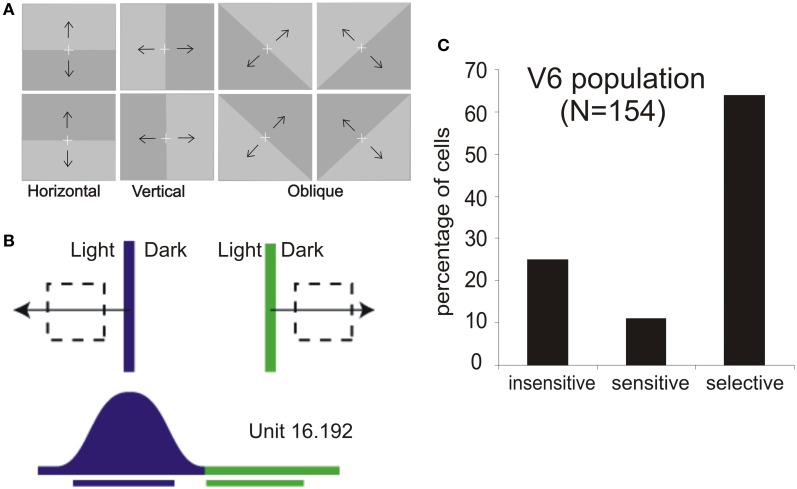Figure 3.
Motion sensitivity in macaque area V6. (A) Stimuli used for visual stimulation of V6. Light/Dark borders of different orientations and moving in different directions as indicated by the black arrows, vertically, horizontally, and in two oblique directions are the best stimuli to activate single cells in this cortical area. White cross: fixation point. (B) Visual response of a direction-selective V6 cell. Top: schematic representation of the receptive field (dashed line) and of the stimulus (light/dark border) moved across the receptive field in the direction indicated by the arrow (blue, leftward movement direction; green, rightward). Bottom: Scheme of the neural responses to the two directions of motion and bars indicating the durations of visual stimulations. (C) Incidence of direction sensitivity in V6 neuronal population. We defined as direction “selective” those cells whose response to a correctly oriented stimulus moving in the direction opposite to the preferred one was <20% of the firing rate evoked during optimal stimulation; direction “sensitive” those whose response was between 20% and 80%; and direction “insensitive” those whose response in the opposite direction was >80% of that in the preferred one. Modified from Pitzalis et al. (2010).

